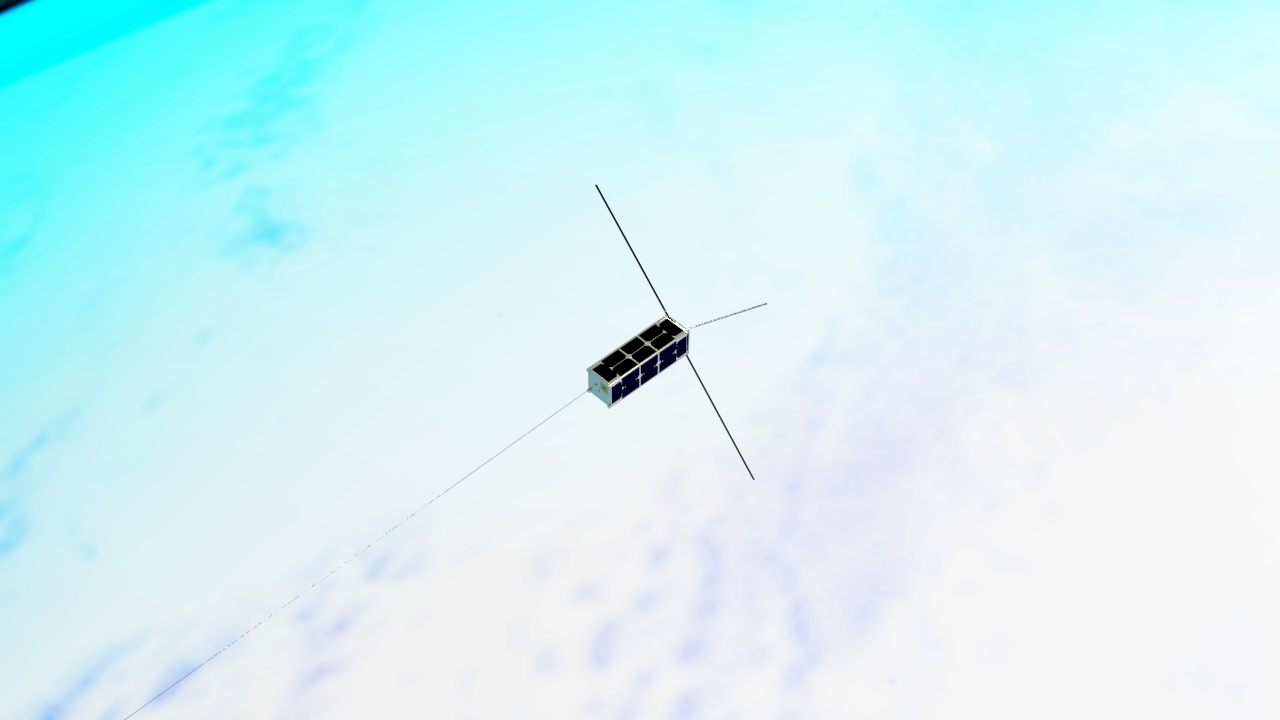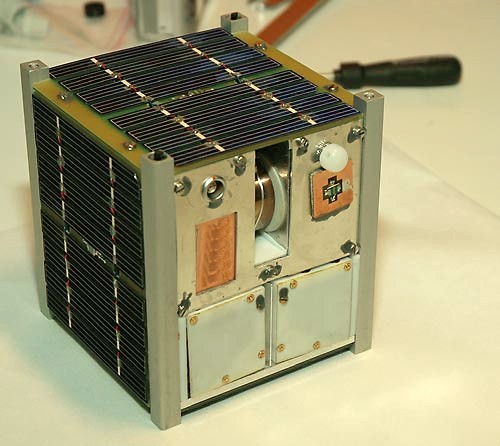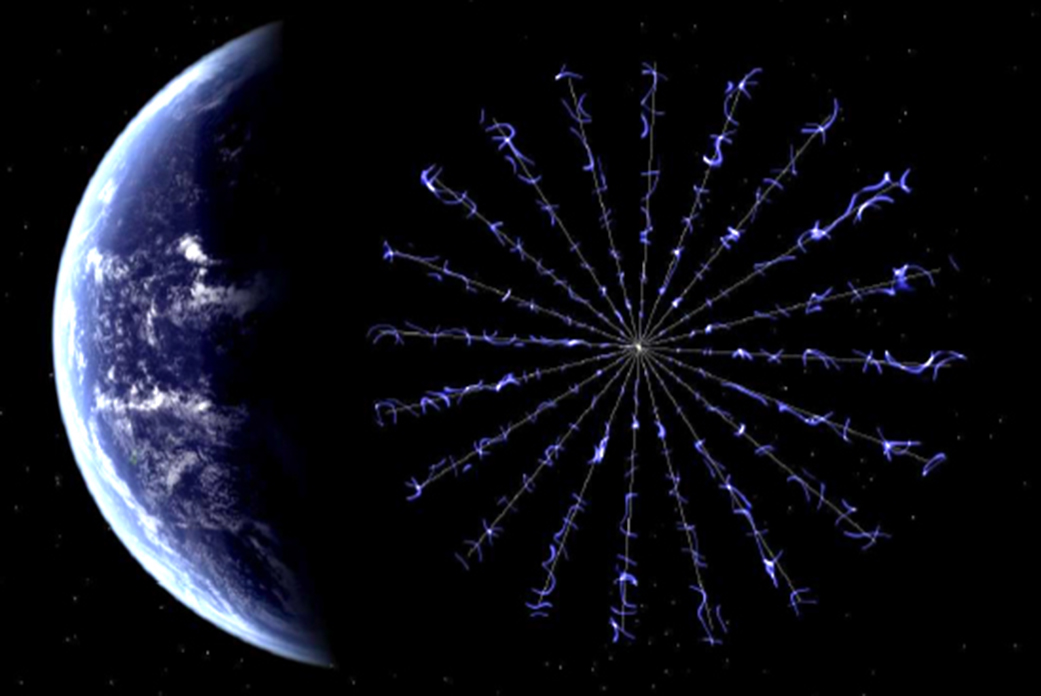|
Aalto-1 Nanosatellite
Aalto-1 is a Finnish research nanosatellite, created by students of Aalto University. Based on the CubeSat architecture, it was originally scheduled to be launched in 2013, it was launched on 23 June 2017. It is Finland's first student satellite project and indigenously-produced satellite. As of 2021, the satellite is operational. Project history The Aalto-1 project began in 2010 with a feasibility study, which was conducted as part of a university course on space technology. The study was followed by the publication of a preliminary design in 2011. A critical design review (CDR) of the satellite was conducted in 2012. In all, over 80 students of Aalto University's School of Electrical Engineering were involved in the project. Design The solar-powered CubeSat - based satellite will weigh approximately , and has 3 main payloads: a miniature Fabry-Pérot spectrometer, designed by VTT Technical Research Centre, a RADMON-radiation detector developed by University of Helsink ... [...More Info...] [...Related Items...] OR: [Wikipedia] [Google] [Baidu] |
Technology Demonstration
A technology demonstration (or tech demo), also known as demonstrator model, is a prototype, rough example or an otherwise incomplete version of a conceivable product or future system, put together as proof of concept with the primary purpose of showcasing the possible applications, feasibility, performance and method of an idea for a new technology. They can be used as demonstrations to the investors, partners, journalists or even to potential customers in order to convince them of the viability of the chosen approach, or to test them on ordinary users. Computers and gaming Technology demonstrations are often used in the computer industry, emerging as an important tool in response to short development cycles, in both software and hardware development. * Computer game developers use tech demos to rouse and maintain interest to titles still in development (because game engines are usually ready before the art is finished) and to ensure functionality by early testing. Short segmen ... [...More Info...] [...Related Items...] OR: [Wikipedia] [Google] [Baidu] |
Space Technology
Space technology is technology for use in outer space, in travel (''astronautics'') or other activities beyond Earth's atmosphere, for purposes such as spaceflight, space exploration, and Earth observation. Space technology includes space vehicles such as spacecraft, satellites, space stations and orbital launch vehicles; deep-space communication; in-space propulsion; and a wide variety of other technologies including support infrastructure equipment, and procedures. The space environment is a sufficiently novel environment that attempting to work in it often requires new tools and techniques. Many common everyday services for terrestrial use such as weather forecasting, remote sensing, satellite navigation systems, satellite television, and some long-distance communications systems critically rely on space infrastructure. Of the sciences, astronomy and Earth science benefit from space technology. New technologies originating with or accelerated by space-related endeavors are o ... [...More Info...] [...Related Items...] OR: [Wikipedia] [Google] [Baidu] |
Space Program Of Finland
Space is the boundless three-dimensional extent in which objects and events have relative position and direction. In classical physics, physical space is often conceived in three linear dimensions, although modern physicists usually consider it, with time, to be part of a boundless four-dimensional continuum known as spacetime. The concept of space is considered to be of fundamental importance to an understanding of the physical universe. However, disagreement continues between philosophers over whether it is itself an entity, a relationship between entities, or part of a conceptual framework. Debates concerning the nature, essence and the mode of existence of space date back to antiquity; namely, to treatises like the ''Timaeus'' of Plato, or Socrates in his reflections on what the Greeks called ''khôra'' (i.e. "space"), or in the ''Physics'' of Aristotle (Book IV, Delta) in the definition of ''topos'' (i.e. place), or in the later "geometrical conception of place" as "space ... [...More Info...] [...Related Items...] OR: [Wikipedia] [Google] [Baidu] |
CubeSats
A CubeSat is a class of miniaturized satellite based around a form factor consisting of cubes. CubeSats have a mass of no more than per unit, and often use commercial off-the-shelf (COTS) components for their electronics and structure. CubeSats are put into orbit by deployers on the International Space Station, or launched as secondary payloads on a launch vehicle. , more than 1,600 CubeSats have been launched. In 1999, California Polytechnic State University (Cal Poly) professor Jordi Puig-Suari and Bob Twiggs, a professor at Stanford University Space Systems Development Laboratory, developed the CubeSat specifications to promote and develop the skills necessary for the design, manufacture, and testing of small satellites intended for low Earth orbit (LEO) that perform a number of scientific research functions and explore new space technologies. Academia accounted for the majority of CubeSat launches until 2013, when more than half of launches were for non-academic purposes, and ... [...More Info...] [...Related Items...] OR: [Wikipedia] [Google] [Baidu] |
India
India, officially the Republic of India (Hindi: ), is a country in South Asia. It is the seventh-largest country by area, the second-most populous country, and the most populous democracy in the world. Bounded by the Indian Ocean on the south, the Arabian Sea on the southwest, and the Bay of Bengal on the southeast, it shares land borders with Pakistan to the west; China, Nepal, and Bhutan to the north; and Bangladesh and Myanmar to the east. In the Indian Ocean, India is in the vicinity of Sri Lanka and the Maldives; its Andaman and Nicobar Islands share a maritime border with Thailand, Myanmar, and Indonesia. Modern humans arrived on the Indian subcontinent from Africa no later than 55,000 years ago., "Y-Chromosome and Mt-DNA data support the colonization of South Asia by modern humans originating in Africa. ... Coalescence dates for most non-European populations average to between 73–55 ka.", "Modern human beings—''Homo sapiens''—originated in Africa. Then, int ... [...More Info...] [...Related Items...] OR: [Wikipedia] [Google] [Baidu] |
Falcon 9
Falcon 9 is a partially reusable medium lift launch vehicle that can carry cargo and crew into Earth orbit, produced by American aerospace company SpaceX. The rocket has two stages. The first (booster) stage carries the second stage and payload to a certain altitude, after which the second stage lifts the payload to its ultimate destination. The rocket evolved through several versions. V1.0 flew from 2010–2013, V1.1 flew from 2013–2016, while V1.2 Full Thrust first launched in 2015, encompassing the Block 5 variant, flying since May 2018. The booster is capable of landing vertically to facilitate reuse. This feat was first achieved on flight 20 in December 2015. Since then, SpaceX has successfully landed boosters over 100 times. Individual boosters have flown as many as 15 flights. Both stages are powered by SpaceX Merlin engines, using cryogenic liquid oxygen and rocket-grade kerosene (RP-1) as propellants. The heaviest payloads flown to geostationary transfer or ... [...More Info...] [...Related Items...] OR: [Wikipedia] [Google] [Baidu] |
Space Junk
Space debris (also known as space junk, space pollution, space waste, space trash, or space garbage) are defunct human-made objects in space—principally in Earth orbit—which no longer serve a useful function. These include derelict spacecraft—nonfunctional spacecraft and abandoned launch vehicle stages—mission-related debris, and particularly numerous in Earth orbit, fragmentation debris from the breakup of derelict rocket bodies and spacecraft. In addition to derelict human-made objects left in orbit, other examples of space debris include fragments from their disintegration, erosion and collisions or even paint flecks, solidified liquids expelled from spacecraft, and unburned particles from solid rocket motors. Space debris represents a risk to spacecraft. Space debris is typically a negative externality—it creates an external cost on others from the initial action to launch or use a spacecraft in near-Earth orbit—a cost that is typically not taken into account no ... [...More Info...] [...Related Items...] OR: [Wikipedia] [Google] [Baidu] |
Atmospheric Entry
Atmospheric entry is the movement of an object from outer space into and through the gases of an atmosphere of a planet, dwarf planet, or natural satellite. There are two main types of atmospheric entry: ''uncontrolled entry'', such as the entry of astronomical objects, space debris, or bolides; and ''controlled entry'' (or ''reentry'') of a spacecraft capable of being navigated or following a predetermined course. Technologies and procedures allowing the controlled atmospheric ''entry, descent, and landing'' of spacecraft are collectively termed as ''EDL''. Objects entering an atmosphere experience atmospheric drag, which puts mechanical stress on the object, and aerodynamic heating—caused mostly by compression of the air in front of the object, but also by drag. These forces can cause loss of mass (ablation) or even complete disintegration of smaller objects, and objects with lower compressive strength can explode. Crewed space vehicles must be slowed to subsonic speed ... [...More Info...] [...Related Items...] OR: [Wikipedia] [Google] [Baidu] |
Electric Sail
An electric sail (also known as an electric solar wind sail or an E-sail) is a proposed form of spacecraft propulsion using the dynamic pressure of the solar wind as a source of thrust. It creates a "virtual" sail by using small wires to form an electric field that deflects solar wind protons and extracts their momentum. The idea was first conceptualised by Pekka Janhunen in 2006 at the Finnish Meteorological Institute. Principles of operation and design The electric sail consists of a number of thin, long and conducting tethers which are kept in a high positive potential by an onboard electron gun. The positively charged tethers deflect solar wind protons, thus extracting momentum from them. Simultaneously they attract electrons from the solar wind plasma, producing an electron current. The electron gun compensates for the arriving electric current. One way to deploy the tethers is to rotate the spacecraft, using centrifugal force to keep them stretched. By fine-tuning the p ... [...More Info...] [...Related Items...] OR: [Wikipedia] [Google] [Baidu] |
University Of Turku
sv, Åbo universitet , latin_name = Universitas Aboensis , image_name = University of Turku.svg , motto = ''Vapaan kansan lahja vapaalle tieteelle'' , established = 1920 , type = Public University , endowment = , administrative_staff = 3,412 , rector = Jukka Kola , students = 20,768 , undergrad = 8,247 , postgrad = 6,244 , doctoral = 1,984 , city = Turku , country = Finland , campus = Urban , free_label = , free = , colors = , colours = , mascot = , affiliations = Coimbra Group, UArctic , website Official Website (in English) , motto_lang = fin , mottoeng = The gift of a free nation to free science ... [...More Info...] [...Related Items...] OR: [Wikipedia] [Google] [Baidu] |
University Of Helsinki
The University of Helsinki ( fi, Helsingin yliopisto, sv, Helsingfors universitet, abbreviated UH) is a public research university located in Helsinki, Finland since 1829, but founded in the city of Turku (in Swedish ''Åbo'') in 1640 as the Royal Academy of Åbo, at that time part of the Swedish Empire. It is the oldest and largest university in Finland with the widest range of disciplines available. In 2020, around 31,600 students were enrolled in the degree programs of the university spread across 11 faculties and 11 research institutes. As of 1 August 2005, the university complies with the harmonized structure of the Europe-wide Bologna Process and offers bachelor, master, licenciate, and doctoral degrees. Admission to degree programmes is usually determined by entrance examinations, in the case of bachelor's degrees, and by prior degree results, in the case of master and postgraduate degrees. Entrance is particularly selective (circa 15% of the yearly applicants are admi ... [...More Info...] [...Related Items...] OR: [Wikipedia] [Google] [Baidu] |
VTT Technical Research Centre Of Finland
VTT Technical Research Centre of Finland Ltd is a state-owned and controlled non-profit limited liability company. VTT is the largest research and technology company and research centre conducting applied research in Finland. It provides research and innovation services and information for domestic and international customers and partners, both in private and public sectors. VTT is part of Finland's innovation system and operates under the mandate of the Ministry of Economic Affairs and Employment. History Technical Research Institute of Finland (VTL) (1942–1972) VTT – then called the Technical Research Institute of Finland (VTL) – was founded on 16 January 1942 by President Risto Ryti’s decree. Its mission was to engage in technical research for the benefit of science and society as a whole. Construction started immediately, and the research institute was completed in autumn 1943. The volume of the building was 20,000 cubic metres, and seven of VTT’s first ten labor ... [...More Info...] [...Related Items...] OR: [Wikipedia] [Google] [Baidu] |





.jpg)